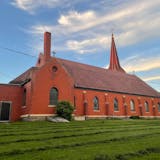Opinion editor's note: Star Tribune Opinion publishes a mix of national and local commentaries online and in print each day. To contribute, click here.
•••
Watch the Minnesota Legislature for a few decades and one sees a plethora of political possibilities. Something I saw in 1980 might offer today's U.S. House — stuck for the past two weeks without a permanent speaker — a clue about how to restore the chamber's functionality, and maybe even its respectability.
Return with me to Jan. 22, 1980 — the day that a Republican minority determined which DFLer would become the speaker of the Minnesota House.
The House was tied 67-67 in 1979, and via a painfully negotiated power-sharing deal, Independent-Republican Rod Searle of Waseca served as speaker, while DFLer Irv Anderson of International Falls chaired the Rules Committee.
This awkward arrangement ended with the May 1979 expulsion of one Republican for an alleged campaign law violation and a special election that replaced him with a DFLer. DFLers started the 1980 session with a skinny 68-66 majority.
Anderson seemed like a shoo-in to become speaker. But when I popped my head into the office of IR Rep. Bill Schreiber the day before the 1980 session convened, he advised me not to be too sure about that.
A variation on the expected script was being written, he disclosed. A second DFLer, Fred Norton of St. Paul, the respected chair of the House Appropriations Committee, had agreed to allow his name to be placed in nomination. That meant that there would be three speaker candidates — Anderson, Searle and Norton.


